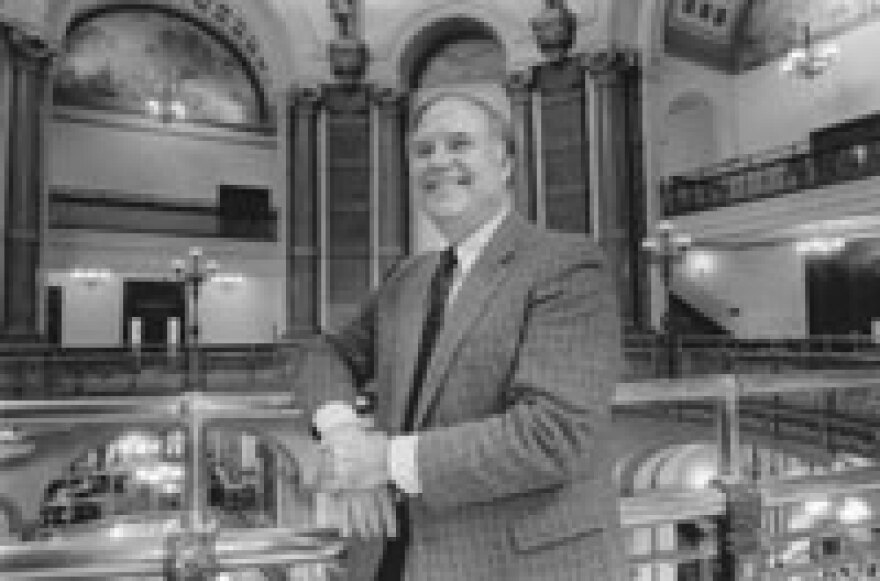As Illinois lawmakers start a long summer recess, the $53.4 billion budget they left behind for the fiscal year starting July 1 leads to an inescapable conclusion: Austerity, like beauty, must lie in the eye of the beholder.
After weeks of dire warnings about an extremely tight budget year, repeated calls for belt-tightening and trial balloons proposing no new or expanded programs and no new money for bricks-and-mortar, the final fiscal year 2002 budget stands some $3.4 billion higher than the request Gov. George Ryan made in February.
The biggest chunk of the increase, some $2.3 billion according to a Democratic analysis, is money approved in the past for construction work not yet finished. The increase only reflects more current estimates of the sums still unspent. But that still leaves $1 billion or so in add-ons to Ryan's original plan.
The contradiction between rhetoric and reality underscores how hard it is to say no, especially in a once-in-a-decade redistricting year when lawmakers don't know who their future constituents might be, but are sure a fire truck here or a soccer field there will help break the ice.
A second lesson would be that governors usually pretty much get their way on the budget, even when legislative leaders try an end-run on a chief executive with lousy public approval ratings.
Opening the final act in this spring's budget drama, Senate President James "Pate" Philip, a Wood Dale Republican, and House Speaker Michael Madigan, a Chicago Democrat, in mid-May unveiled an alternative plan they said would cut the fat from the governor's proposal and curb the excess spending of Ryan's first two years. They endorsed the governor's pledge of 51 percent of new general fund revenue for education, but ruled out most increases in human services spending and chopped more than a third from Ryan's proposed outlays for bond-funded building projects. At the same time, the pair called for $360 million in bond money and general funds for lawmakers to spend on local projects.
Hatched in secrecy with no help from either minority leader. Sen. Emil Jones Jr., a Chicago Democrat, or Rep. Lee A. Daniels, an Elmhurst Republican, the Philip-Madigan plan surfaced just days after a Chicago Tribune poll found 61 percent of voters saying Ryan does not deserve a second term.
Aided by the snubbed minority leaders, though, Ryan was able to paint the Philip-Madigan plan as pork over people, and the duo backed down. Madigan even suggested stripping all new building projects from the budget, deferring their fate until the fall, but that, too, had little traction.
In the end, lawmakers approved a budget that gave the governor 99 percent of what he wanted, according to Sen. Steven Rauschenberger of Elgin, the top GOP budget guru.
Among the highlights:
Lawmakers earmarked $460 million of the expected $900 million in new revenue for education, the 51 percent Ryan wanted. The new money allows a $135 boost, to $4,560, in the state's per-pupil guarantee for the coming school year. It also fully covers local districts' claims for so-called mandated categorical programs, such offerings as special education and transportation. And, for the first time, all school districts will be eligible for poverty grants, instead of just districts with 20 percent or more low-income students.
The budget also provides the $l-per-hour pay raise the governor wanted for direct care workers who help the developmentally disabled. In addition, the legislature tried to shore up other human service areas not in Ryan's original plan. Lawmakers funded higher rates for community-based agencies that contract with the state to provide a wide range of social services and for nursing homes caring for Medicaid clients. And they restored $22 million Ryan cut from payments to pharmacies for filling Medicaid prescriptions.
Far from the building freeze Madigan briefly championed, the budget provides more than $1.1 billion in bond-funded projects, slightly more than Ryan requested. Included in the total is at least $300 million lawmakers can use for their projects. To make room, the budget trimmed some of the bond-funded projects Ryan wanted, in some instances shifting funding to tobacco settlement money instead. In other cases, the budget sets out a longer timeline than Ryan suggested; for example, a $250 million community college building program will be spread over five years instead of two.
Lawmakers also approved a $740 million school construction program, $240 million more than the governor sought, to help build new classrooms across the state.
Even with its record heft, however, the budget doesn't cover all critical needs. Among notable omissions are funding for Family Care, which would provide health insurance for the parents of children now in KidCare, and help for retired teachers now facing steep hikes in premiums for state health insurance.
The new budget also rests on somewhat shaky assumptions about revenue and spending. The leaders opted for Ryan's revenue estimate for fiscal year 2002, $185 million rosier than projections by legislative forecasters. They also chose to believe a $270 million hole in the Medicaid budget can be closed with creative accounting and congressional reworking of funding formulas to benefit Illinois.
Still, the budget envisions an end-of-the-year balance of some $1.2 billion to cover about $850 million in outstanding bills, leaving a budgetary surplus of around $350 million, the sixth year in a row the state has ended in the black. Between fiscal years 1981 and 1996, in contrast, the state finished in the red 14 out of 16 years. Moreover, the plan calls for at least $200 million in a rainy day fund, available for any cash-flow problems that might arise during the year.
And the austerity rhetoric? One is reminded of the late Rep. Art Telcser, a Chicago Republican and one of Ryan's closest pals, who loved to say of Statehouse politics, "It's all show biz."
Charles N. Wheeler III is director of the Public Affairs Reporting program at the University of Illinois at Springfield.






